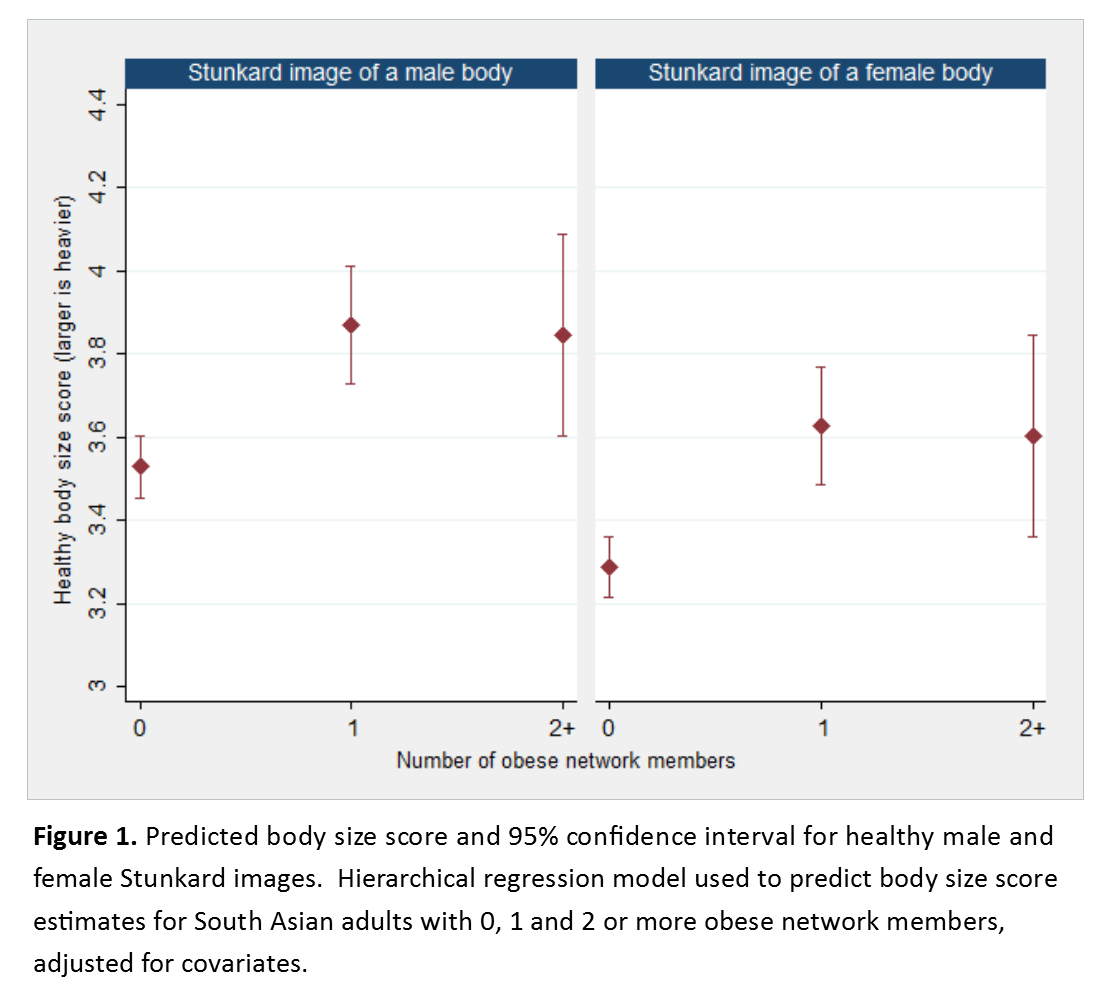Presenting Author:
Nicola Lancki, M.P.H.
Principal Investigator:
Namratha Kandula, M.D.
Department:
Medicine
Keywords:
body image, body size norms, obesity, social networks
Location:
Third Floor, Feinberg Pavilion, Northwestern Memorial Hospital
PH21 - Public Health & Social Sciences
Body size norms of South Asian adults: exploring network influence
Objective: Social norms operating through social networks may influence perceptions of a healthy body weight. This study examined the relationship between body size norms of South Asian adults and the body sizes of their social network members. Methods: South Asian adults (n=674, ages 43-85 years) who participated in the Mediators of Atherosclerosis in South Asians Living in America (MASALA) study were asked to list their social network members. Social network members were defined as the “people who you regularly talk with about things that are important to you.” Participants reported their perceptions of their network members’ body sizes, perceptions of both a healthy male and female body size (norms), and assessment of their own body size using the Stunkard 9-figure scale. The Stunkard scale is a silhouette figure rating scale that consists of 9 male and 9 female figures of increasing body size. The figures can be categorized as underweight (1), normal weight (2-4), overweight (5-6), and obese (7-9). The number of obese network members (0, 1, or ≥2 or more) was calculated. Hierarchical regression models were used to examine the relationship between male and female body size norms as reported by the participant and by the body sizes of their network members. Random effects were included at the participant level to account for clustering of male and female body size norms within participants. Models were adjusted for participant age, sex, network size, assessment of their own body size, and South Asian identity on a scale from 1 (not at all) to 10 (very much so). Results: Participants were 43% female with mean (SD) body mass index 26.5 (SD+/-4.1) kg/m2. There were 2,890 network members identified (29% with an overweight body size, 8% with an obese body size). Female MASALA participants reported body size norms 0.16 points lower than male participants (p=.01; 95% CI: -0.28, -0.04). In fully adjusted models, perceptions of body size norms increased 0.34 points on the Stunkard scale among participants who had one obese network member (p<0.01; 95% CI: 0.18, 0.49) and 0.32 points for having two or more obese network members (p=0.01; 95% CI: 0.06, 0.57) compared to participants who had no obese network members (Figure 1). Participants’ body size norms of female images was 0.24 points lower than of male images (p<.01; 95% CI: -0.29, -0.19). Participant’s assessment of their own body size was positively associated with larger body size norms (p<.01) and stronger South Asian identity was negatively associated (p=.05). Conclusions: This study provides evidence of both social influences and cultural identity on body size norms of South Asian adults. Having obese social network members is associated with larger body size norms, and South Asian identity is associated with smaller body size norms. Interventions should consider the role of social and cultural influences on weight norms and related behaviors.

